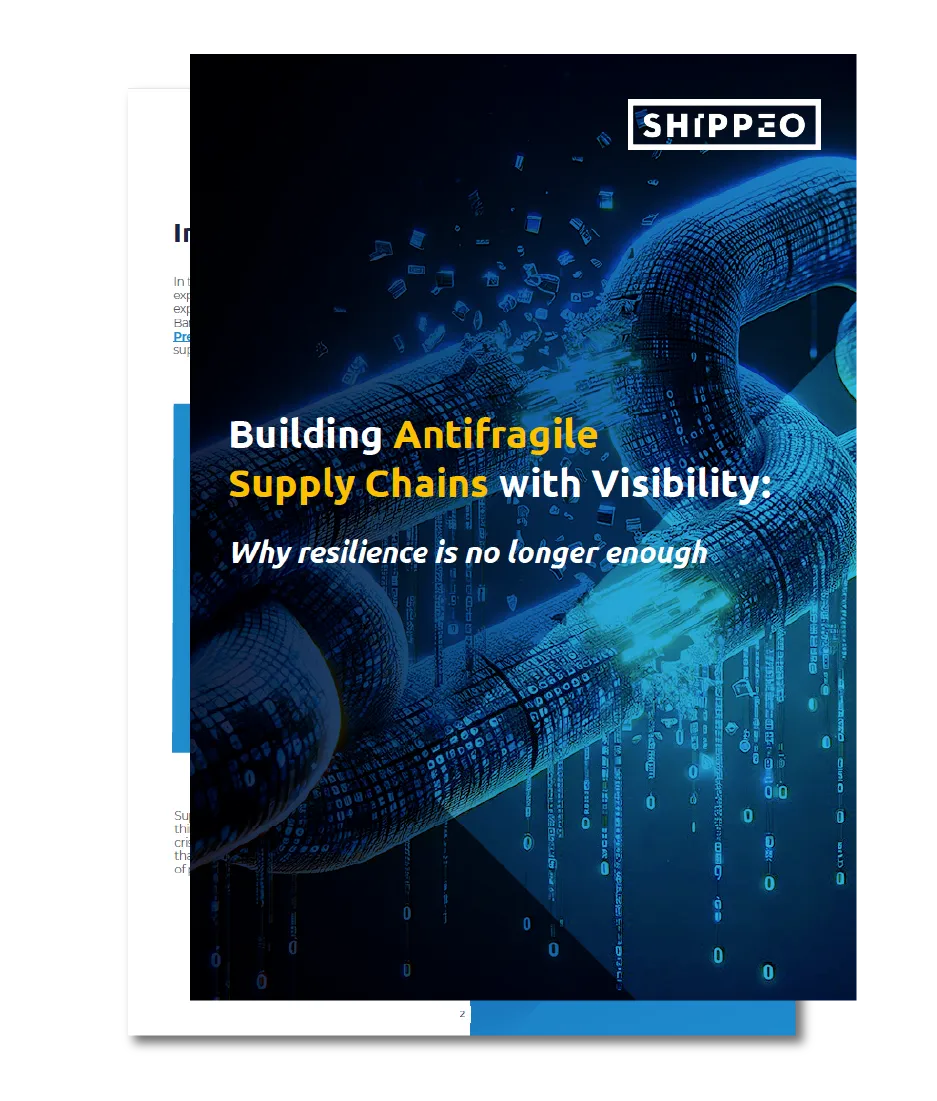The Age of Antifragility: Building Supply Chains That Thrive on Disruption
The global supply chain landscape is no longer characterized by predictability and stability. Today, it's a dynamic ecosystem constantly buffeted by unforeseen events. In this era of unprecedented volatility, companies are increasingly recognizing the need to move beyond mere resilience – they must build antifragile supply chains that not only withstand disruptions but actually thrive in the face of uncertainty.
This transformation hinges on a fundamental shift: embracing data as a strategic asset. Companies that can harness the full potential of their data are not just surviving but gaining a competitive edge in the face of constant disruption.
Our Chief Product Officer, Anand Medepalli, shares five pivotal lessons on how data can revolutionize supply chains. Drawing on his deep knowledge of the industry, Anand offers invaluable insights for businesses aiming to build antifragile supply chains powered by the highest-quality data.
1. Quality Over Quantity: Refining the Data Wellspring
In the age of big data, the adage "more is better" no longer holds true. As Anand emphasizes, the true value lies not in the sheer volume of data, but in its accuracy, consistency, and relevance. High-quality data serves as the bedrock for meaningful insights and informed decision-making – the cornerstones of optimized supply chain operations.
"Managing and maintaining a quality data set that aligns with specific business needs is now the most critical task," says Anand. By prioritizing data quality from the outset, companies can ensure they're building on a solid foundation for success.
2. Democratizing AI: Leveraging Accessible Tools
The AI landscape has undergone a dramatic transformation. Foundational models from tech giants like Google and Microsoft have democratized access to sophisticated tools. This shift empowers businesses to focus on utilizing AI effectively, rather than building it from scratch.
As Anand highlights, “With the availability of automated data pipelines and foundational models, we can now focus on the insights and value rather than the technology itself." This newfound freedom allows companies to dedicate resources to the most crucial aspect: their data.
3. Strategic Deployment: AI as a Force Multiplier
AI is not a silver bullet for every challenge in supply chain management. While its potential is vast, deploying AI without a clear strategy can introduce unnecessary complexity, inefficiencies, and poor resource allocation. The key to maximizing AI’s impact is to apply it where it delivers the most significant value—solving real-world business problems rather than using it for the sake of innovation.
As Anand Medepalli, Chief Product Officer at Shippeo, explains, companies must resist the temptation to apply AI indiscriminately. Instead, they should start with the business outcome in mind and work backward to determine where AI can provide meaningful improvements. This approach ensures that AI investments drive measurable impact rather than adding layers of complexity
"AI can be a game-changer, but it must be deployed with intent. Businesses that try to overhaul everything at once often struggle to see ROI. Instead, they should focus on areas where AI can automate repetitive processes, enhance forecasting, or provide insights that were previously impossible to access," says Anand.
For example, at Shippeo, AI is strategically applied to automate transportation processes, streamline decision-making, and improve operational efficiency. AI-enabled recommendations and collaborative workflows help reduce decision-making latency, allowing supply chain teams to react faster and more effectively to disruptions. Some large organizations with mission-critical supply chains, such as Renault Group, are already benefiting from their first automated processes.
This approach is more than just about efficiency—it is a key enabler for antifragile supply chains, ensuring businesses remain resilient and adaptable in the face of constant disruptions. By starting small, proving value, and scaling AI where it truly matters, organizations can transform their supply chains into intelligent, self-optimizing ecosystems.
4. The Power of Duality: Blending Historical and Real-Time Data
Machine learning and statistical models thrive on a combination of historical and real-time data. Historical data provides a crucial baseline for predictions, while real-time data empowers companies to dynamically adjust forecasts. At Shippeo, this dual approach forms the core of our strategy for predicting shipment milestones, managing risks, and optimizing operations.
"Historical data is essential for establishing accurate benchmarks, while real-time data allows us to refine predictions dynamically," explains Anand. "By continuously adapting our forecasts based on both, we provide flexible and reliable predictions, even in unpredictable conditions." explains Anand. This adaptability is essential for navigating the volatility of today's supply chain environment.
5. Start Small, Scale Smart: Building a Sustainable Data Strategy
One of Anand's most valuable insights is the importance of a measured approach. Companies shouldn't attempt to tackle everything at once. Instead, a focus on solving one specific problem at a time allows for valuable learning and gradual capability expansion. This incremental approach fosters a solid foundation for long-term success.
As Anand puts it, "Solve one problem, then the second. Soon, these low-hanging fruits will add up to a massive tree of benefits for your organization."
The role of data in supply chains has transcended its former status as a supporting tool. Today, data stands as a driving force. By prioritizing data quality, strategically deploying AI, and harnessing the power of both historical and real-time insights, companies can unlock a new era of supply chain resilience.















